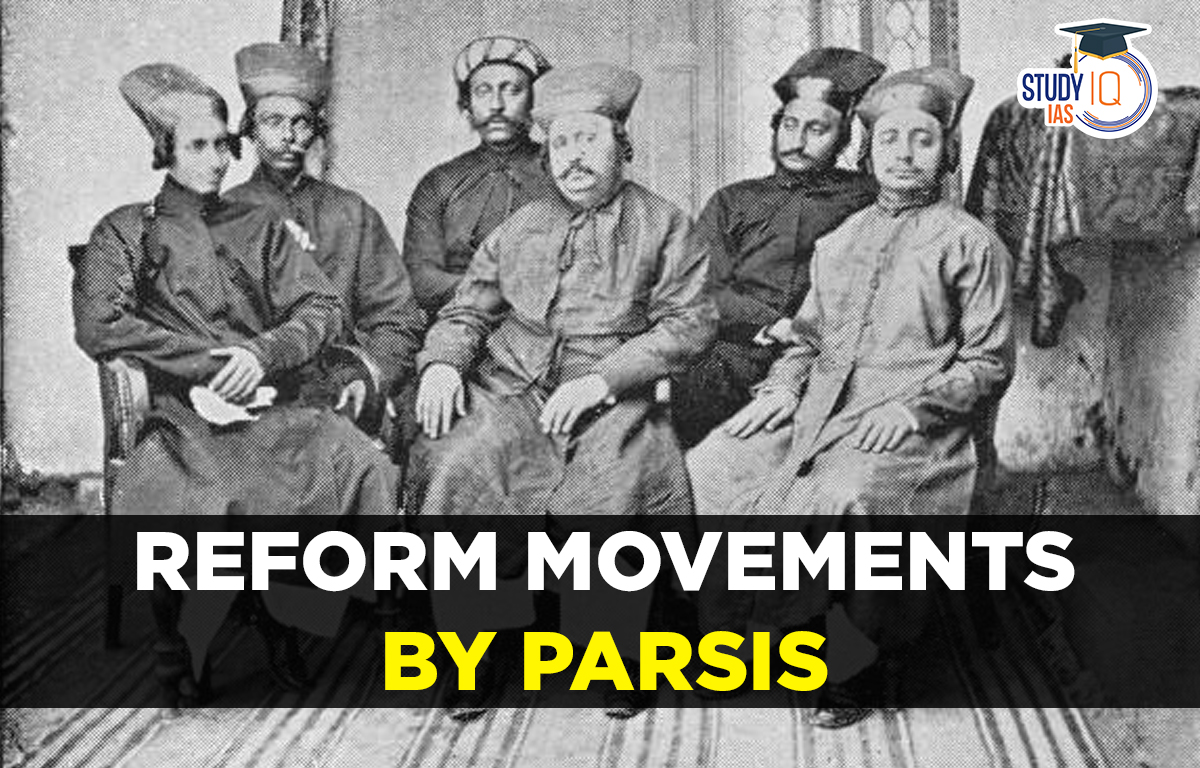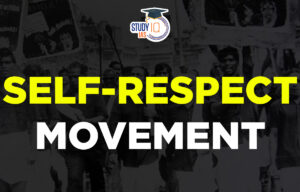Table of Contents
The Parsi community, followers of Zoroastrianism, have a rich history of social, cultural, and religious reform movements, especially during the 19th and early 20th centuries. These reforms were driven by the need to modernize while preserving their unique identity amidst India’s evolving social and political landscape.
Reform Movements by Parsis
Zoroastrians were persecuted in their native Iran, therefore in the tenth century, a considerable number of them fled to India’s west coast. They prospered over the years as a commercial community. Even though it was a small village, the nineteenth-century reform movements had an impact on it.
A group of Parsis with English education established the Rahnumai Madayasnan Sabha (Religious Reform Association) in 1851 with the goal of “regeneration of the social conditions of the Parsis and the restoration of the Zoroastrian faith to its pristine purity.” Naoroji Furdonji, Dadabhai Naoroji, K. R. Cama, and S. S. Bengalee were the movement’s leaders. This article has all the details about the Reforms Movement by Parsis for the candidates preparing for the UPSC or Civil Service Examination.
Rahnumai Mazdayasnan Sabha
The Rahnumai Mazdayasnan Sabha, established in 1851 in Bombay (Mumbai), was a pioneering organization that played a crucial role in the social and religious reform of the Parsi community in India. The term “Rahnumai Mazdayasnan” translates to “Guides of the Zoroastrian Religion,” reflecting the Sabha’s commitment to revitalizing and modernizing Zoroastrian practices while addressing contemporary challenges.
Objectives
- Religious Reform:
- Revive Zoroastrian principles and adapt them to modern times.
- Eliminate superstitions and promote rationality in religious practices.
- Social Advancement:
- Encourage education, particularly among Parsi women.
- Advocate for gender equality and social justice within the community.
- Community Leadership:
- Serve as a platform for intellectual discourse and progressive ideas.
- Strengthen the identity and unity of the Parsi community.
History of Reform Movements by Parsis
Furdunji Naoroji and S.S. Bengalee created the Parsi Religious Reform Association in Bombay in 1851 with funding provided by K.N. Kama. Its president was Furdunji Naoroji, and its secretary was S.S. Bengali. In the 1840s, Naroji Furdunji was the editor of the Fam-i-Famshid, a publication dedicated to upholding Zoroastrianism. In 1850, he also released the novel Tarika Farthest and other pamphlets.
A socio-religious movement that aimed to codify the Zoroastrian faith and transform Parsi society was born as a result of all these occurrences. A small number of educated Parsis established the Rahnumai Mazdayasnan Sabha in 1851. Bengali began publishing a monthly periodical called Jagat Mitra in 1850, followed by the Jagat Premi in 1851. Rast Goftar, the sabha’s journal, served as the movement’s primary voice.
The leaders were against infant marriage, the use of astrology, and extravagant betrothal, wedding, and death rites. However, the Sabha’s efforts split the Parsis community into two groups: those who supported drastic reform and those who supported just minor adjustments to rituals and customs. The latter group was represented by the Raherastnumi Mazdayasnan, who stood in opposition to the radicals.
| Related Articles | |
| Civil Disobedience Movement | Temple Entry Movement |
| Reform Movements in Southern India | Self-Respect Movement |


 Birsa Munda Birth Anniversary 2025: Life...
Birsa Munda Birth Anniversary 2025: Life...
 Military Innovations of Afghans and Turk...
Military Innovations of Afghans and Turk...
 Self-Respect Movement, History, Objectiv...
Self-Respect Movement, History, Objectiv...

























